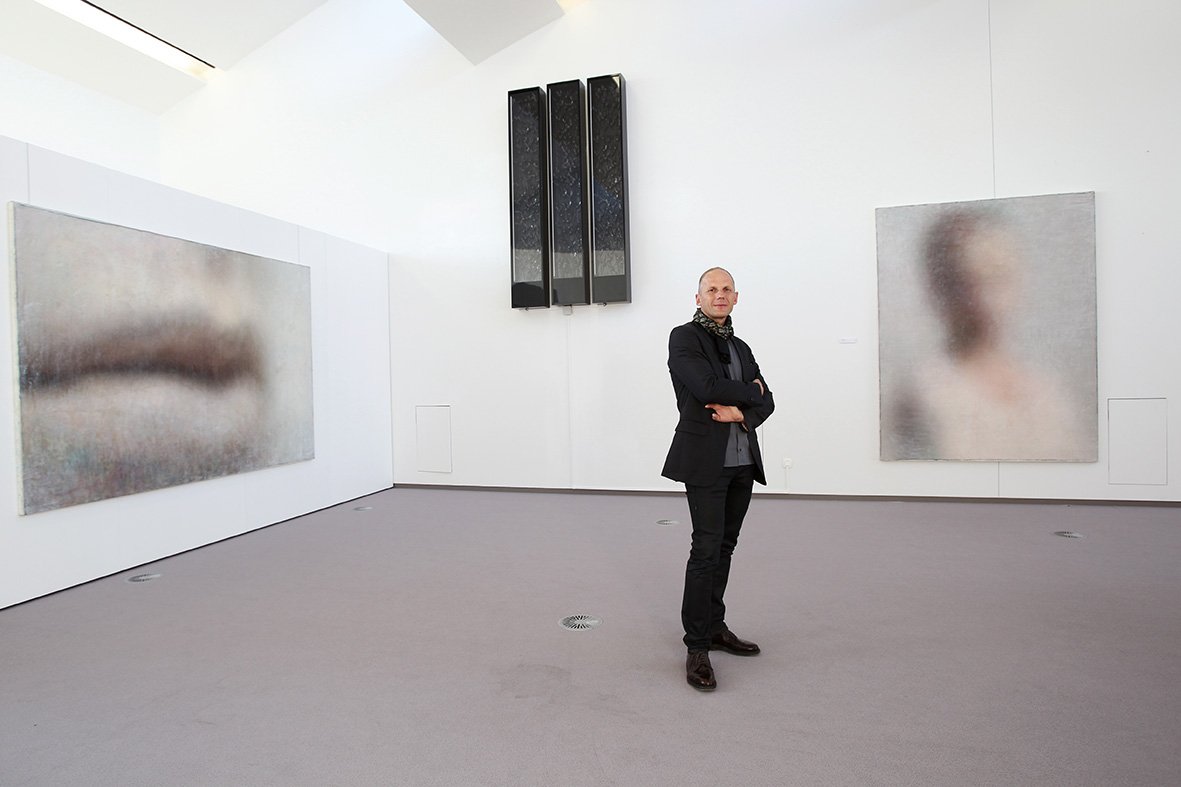
![Foto+3[1].jpeg](https://images.squarespace-cdn.com/content/v1/63e6bd4525711b3e2863b453/aea0ec18-1f4f-4117-baeb-107a3c6ea5af/Foto%2B3%5B1%5D.jpeg)





SOLO SHOW
2014
Vanishing Point
Art Center Hugo Voeten
26.09.14 –
30.10.14
curated by Sventlin Roussev
Standing in front of Titian's painting "Flora" (1515 - 1520) in the Uffizi Gallery in Florence is a paradoxical visual experience. All the cheerfulness of the High Renaissance smiles back at you in this young woman with her hair loose. As you approach her, the brushstrokes blur into an abstract surface before your eyes: the beauty withdraws. She dissolves. She makes herself unavailable, although she is completely present to the viewer's eyes. Titian's allegory stands under completely different pictorial auspices than Robert Bosisio's most recent series of works, which could be categorised as portraits in the broadest sense of the word. They have one thing in common: Reflection on them is fuelled by the questionable presence of the sitter - a portrait contains both absence and presence, as Blaise Pascale writes in the Pensées. The direction is taken by the sense of space and distance par excellence, the sense of seeing. In front of Bosisio's portraits, one realises that viewing always takes place in space and time and at +39 393 9323 927 info@galleriaghetta.com dorisghetta.com Galleria Doris Ghetta 202 Pontives 8, 39040 Lajen Italy Galleria Doris Ghetta Str. Rezia 59, 39046 Ortisei Val Gardena, Italy a specific spatial location. The closer you get to them, the more the figure recedes, finally becoming completely unrecognisable. Fused with a spaceless background, they become immaterial, ghostly beings of light. The faces blur like images from thermal imaging cameras. They are in the passage from someone to nothing, the transformation into something nameless. Everything that once had contours is wrapped up in an opaque nowhere. The portraits represent a turning point in Robert Bosisio's oeuvre. His early works from the 1990s are characterised by an intensive exploration of spaces, occasionally also landscapes. Stylistically, these pictures were even more graphic and contour-oriented, the painterly aspect expressed itself in a strong colourfulness with values of closeness and distance, warmth and coldness. Vibrating in tones and nuances, the colours melt the spaces into light. While these early pictures can still be described as a largely natural sfumato, the blurring effects in the later room pictures become more intense. Doors and open windows, through which strong light floods in, create a threshold atmosphere between inside and outside. Is there a connection between the room pictures and the portraits? Perhaps precisely this one: The word portrait is etymologically derived from protrahere, to draw out, but it also contains porte (door), the opening and closing of doors. Unlike Gerhard Richter's colour blurring, for example, which emphasises the materiality of the painting, Bosisio's pictorial disturbances are constructed in classical illusionistic layered painting. The immaculate precision of the painting - Bosisio is not an ascetic who goes on a painterly diet for the sake of a message - is in counterpoint to the vagueness of the motif. The antagonistic forces of disappearance and the clearest presence interlock to form a painterly organism of "sharp blurriness". In terms of pictorial theory, this adds a third paradox. The transparency and clarity of classical painting, for centuries the guarantor of perfect representation, denies or eliminates itself. However, this elimination never goes so far as to leave only a (ultimately hollow) nothingness behind it. Michel Foucault summarised the disappearance of the human being in the image of a face in the sand that is washed away by the sea. Bosisio explores the limits of this disappearance. Where is the boundary beyond which an "I" ceases to be an "I", asks Milan Kundera in a text about the painter Francis Bacon. It is about unavailability, that is the basic chord of Bosisio's pictures.
Heinrich Schwazer